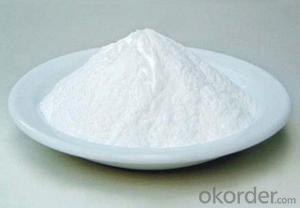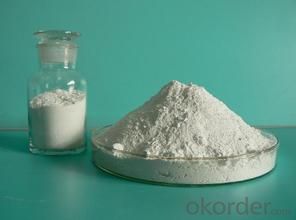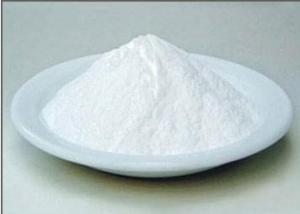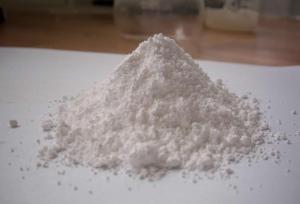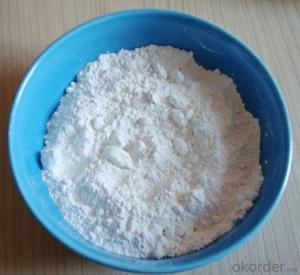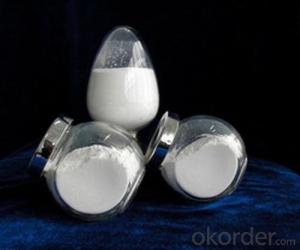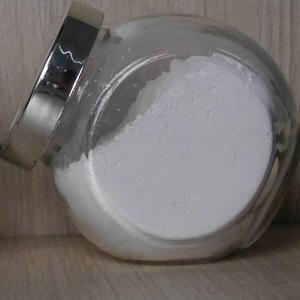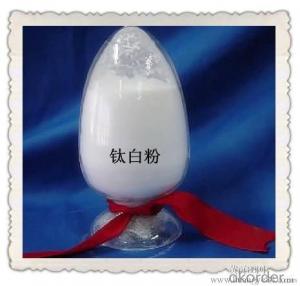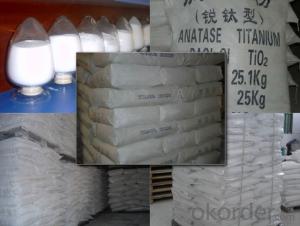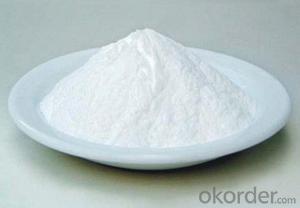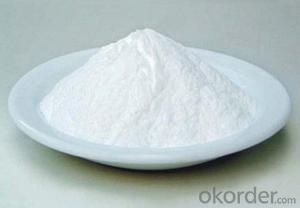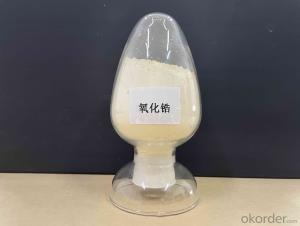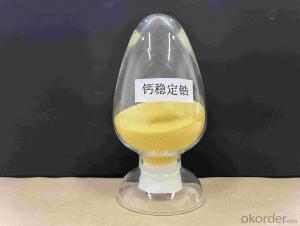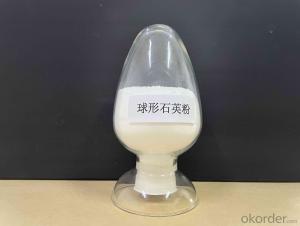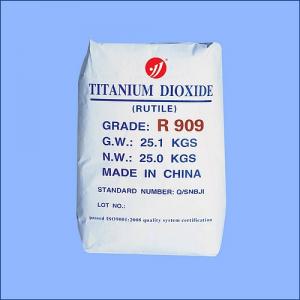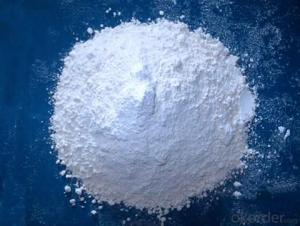Ceramic Grade Zinc Oxide 99.7 Percent Under SGS test
- Loading Port:
- Tianjin
- Payment Terms:
- TT OR LC
- Min Order Qty:
- 20 m.t.
- Supply Capability:
- 200000 m.t./month
OKorder Service Pledge
OKorder Financial Service
You Might Also Like
Specification
Ceramic Grade Nano-Zinc Oxide
Application:
In the ceramic industry, zinc oxide used as a flux; in the printing and dyeing industry, zinc oxide used to prevent dye; Zinc oxide fine particles as a result, high activity, can reduce the glass and ceramic sintering temperature, in addition to the use of nano-Zinc oxide prepared more smooth glazed ceramics, and has anti-bacterial, anti-enzymes, such as the effectiveness of deodorant.
Packing and storage:
This product is packed with plastic-lined and plastic-coated woven bags, 25kg per bag. This product should be keep from breakage, moisture, pollution and contact with acid.
Product quality standards: GB/T 3185-92
ITEM | Quality | ||
131 | 132 | 133 | |
ZnO/% ≥ | 99.0 | 97.0 | 95.0 |
Grain nm≤ | 20 | 57 | 100 |
XRD /nm≤ | 20 | 52 | 100 |
Surface proportion (㎡/g)≥ | 60 | 62 | 65 |
Join index≤ | 50 | 60 | 100 |
Lead oxide( Pb )/%≤ | 0.0005 | 0.0005 | 0.0005 |
Manganese Oxide /% ≤ | 0.0001 | 0.0001 | 0.0001 |
Cupric oxide(Cu)/%≤ | 0.0001 | 0.0001 | 0.0001 |
Cd/%≤ | 0.0002 | - | - |
Hg/%≤ | 0.0001 | - | - |
As/%≤ | 0.0001 | - | - |
105℃ volatile substances %≤ | 0.30 | 0.4 | 0.5 |
Water dissoluble % ≤ | 0.10 | 0.41 | 0.5 |
Hydrochloric acid insoluble %≤ | 0.02 | 0.02 | 0.02 |
Burning decrement %≤ | 2 | 2 | 2 |
Application:
Mainly used in industries such as paint, rubber, medicine, chemical engineering, automotive industry and light industry.
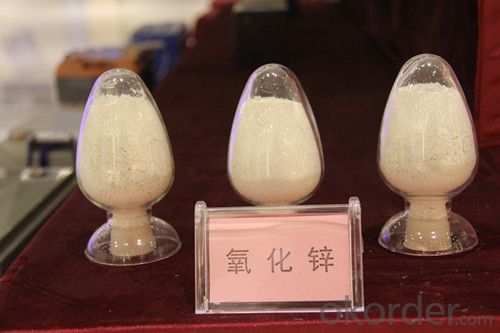
Physical properties:
Non-toxic, odorless, white or light yellow, light powder and deliquescent
Molecular formula: ZnO
Molecular weight: 81.39 according to International Atomic Weight in the year 2001
Packing and storage:
This product is packed with plastic-lined and plastic-coated woven bags, 25kg per bag. This product should be keep from breakage, moisture, pollution and contact with acid.
- Q: What is called transition metal oxide doping
- Transition element refers to a series of metal elements in the d-region of the periodic table, also known as transition metal, including chromium, manganese, iron, cobalt, nickel, copper, zinc and so on are transition metals.
- Q: Iron oxides and their properties
- There is iron oxide FeO, black powder, it is unstable, heated in the air, that is quickly oxidized into Fe3O4
- Q: Whether the metal oxides are alkaline oxides
- Alkaline oxides are metal oxides
- Q: Is SiO2 an amphoteric oxide?
- Not though SiO2 reacts with HF but the reason for this reaction is not because H + is because Si and F-coordination generated SiF4 is very stable.
- Q: What are the oxides of chlorine
- Dichloride, also known as chlorate (ClOClO3) hexahydrate (Cl2O6) dioxane (Cl2O7)
- Q: Acidic oxide is a kind of oxide which can form acid or react with water to form salt and water. Generally non-metallic elements of oxides and certain transition metal elements of high-priced oxide. Such as sulfur trioxide SO3, phosphorus pentoxide P2O5, manganese dioxide Mn2O7, chromium trioxide CrO3 and so on. Most of the non-metallic oxides are acidic oxides. In our familiar non-metallic oxides, carbon monoxide and nitric oxide are not acidic oxides, and are usually classified as non-acid oxides.
- Note: Most of the non-metallic oxides are acidic oxides. In our familiar non-metallic oxides, carbon monoxide and nitric oxide are not acidic oxides and are usually classified as non-acid oxides.
- Q: Titanium oxide total of several?
- TiO. Molecular weight: 63.88, black and yellow powder. The proportion of 4.93. Melting point 1750 ℃. Boiling point greater than 3000 ℃. Insoluble in water, nitric acid, soluble in sulfuric acid, dissolved in dilute hydrochloric acid part of the oxidation of trivalent titanium ions and produce hydrogen. Chemical properties are not stable, by the titanium dioxide in the carbon furnace heating, or zinc, magnesium, hydrogen and other reducing agent reduction in the system. For the production of titanate semiconductors.
- Q: What is the largest oxide of oxygen content?
- [Oxygen content of the largest oxide] is hydrogen peroxide, the formula: H2O2; oxygen content of the mass fraction of 94.1%.
- Q: Clothes on the metal buttons and metal ornaments for a long time there will be a layer of oxide, looks bleak, what good way to make these metal accessories smooth shiny?
- Brush with vinegar or toothpaste
- Q: Do not say fluorine gas, it is the strongest element, do not say that electronic anti-matter and current, authority ah
- Chlorofluorinated Chloride C1F5 Chlorinated Fluorinated Chloride is a non-combustible, non-combustible colorless gas with strong irritating odor at room temperature. Its solid state is white and has a pale yellow color. It is rapidly hydrolyzed to form chlorine and hydrofluoric acid It is a strong oxidizing agent that reacts strongly with most of the inorganic matter, so that although it does not burn in the air, it can cause fire and explosion.
Send your message to us
Ceramic Grade Zinc Oxide 99.7 Percent Under SGS test
- Loading Port:
- Tianjin
- Payment Terms:
- TT OR LC
- Min Order Qty:
- 20 m.t.
- Supply Capability:
- 200000 m.t./month
OKorder Service Pledge
OKorder Financial Service
Similar products
Hot products
Hot Searches
Related keywords
